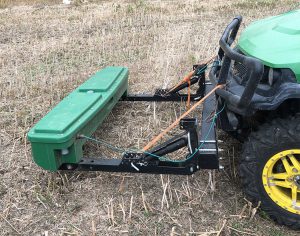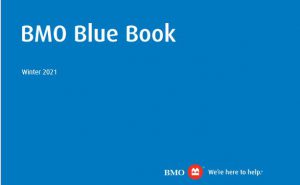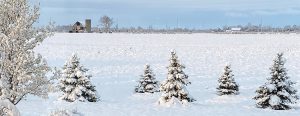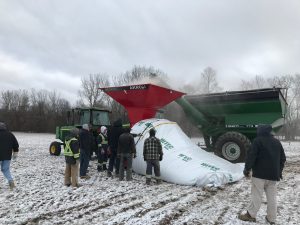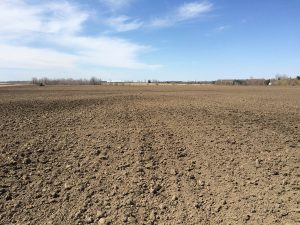Managing the weather
UTILIZING DATA

THE WEATHER IS one aspect of farming which farmers have no ability to change but are forced to work with come what may.
Wind speed and direction can impact when and if you can spray a field. Too much or too little rain can have varying impacts on a crop depending on the growth stage. Temperature plays a role in which pests and diseases are prevalent in any given year.
Perhaps that is why so many farmers have a keen interest in trying to get a better understanding of the weather — from rain gauges to weather stations to one or two (or even five) forecast apps on their smartphone.
“We can’t control the weather; however, we can respond and adjust our management decisions based on what is happening to our crops,” says Dale Cowan, an agronomy strategy manager and senior agronomist with Agris and Wallenstead Farmer Co-operatives. Cowan presented on using weather data during the Weather Wisdom session of the Ontario Agricultural Conference.
“Everyone always wants to know how much rain we got. And the question, is it really how much rain we got or is it I need to know how to adjust my management according to the rainfall?” asks Cowan. “Rain events over a period of time are more informative than a single event.”
Weather dashboards incorporate weather into risk management tools.
Using a weather dashboard does require some set-up, ensuring your field locations, planting dates, and hybrid information are inputted correctly. But once established, a dashboard can be utilized for planning several in-season tasks.
For example, growth stages plotted for your field are based on hybrid and planting date. A growth model utilizes a 30-year average and the 10-day forecast to predict when critical growth stages will occur. As actual forecast data is inputted into the system, the growth stage model will adjust allowing you to plan your scouting and field activities.
“It gives you an idea from a management perspective, how much time you have to get an herbicide applied and do you need to change your herbicide selection because the crop is going to start coming out of the ground,” says Cowan.
Growth stages can also be used to identify the spraying opportunity during the critical weed free period, important for farmers with mixed operations who need to juggle other time-sensitive tasks.
“If you let weeds grow in your corn during that critical weed-free period, you lose four bushels of corn for every inch of weed height,” says Cowan, quoting research conducted by Dr. Peter Sikkema at the University of Guelph Ridgetown Campus. “So there is a cost to delaying weed spraying if you have conflicting field activities going on such as haying.”
Decision Farm by Weather INnovations, featured during the session, is one available weather dashboard. It utilizes weather data including wind speed and direction, humidity, and temperature and combines this information with crop growth stage information and pest thresholds within several different risk management tools available within the dashboard.
SPRAYcast provides recommendations on when conditions are favourable for spraying a fungicide or herbicide based on nozzle tip (fine, medium, or coarse).
BINcast helps you decide if it is a good day to run your grain bin dryer.
DONcast provides a risk assessment for an outbreak of DON. Farmers can use this information to determine if fungicide spraying is warranted.
4R Forecast helps farmers and co-ops plan their fertilizer applications based on predicted rainfall events to ensure they are applied under the appropriate conditions compatible with the 4R Nutrient Stewardship program.
This article is based on information provided during a session of the Ontario Agricultural Conference. Grain Farmers of Ontario was a sponsor of this conference. •























